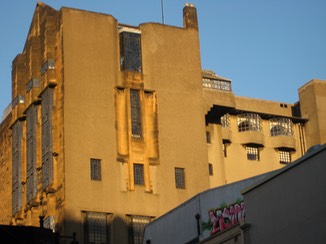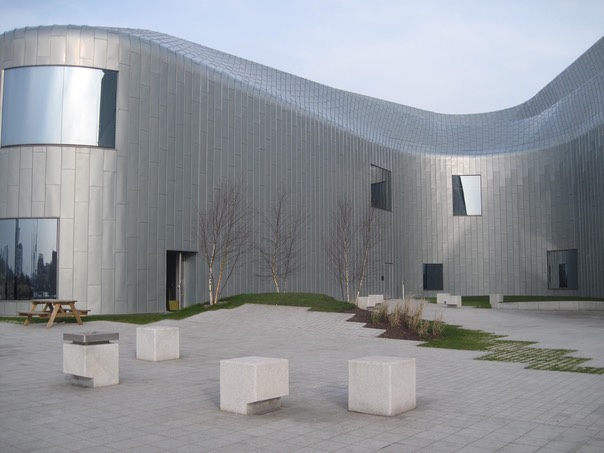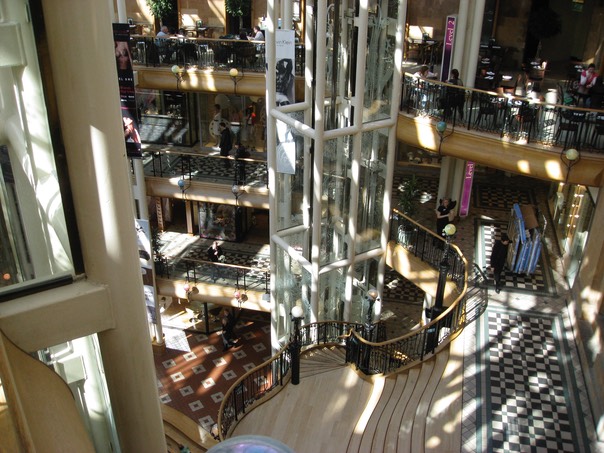
Resourceful Scots have always demonstrated innovation both at home and abroad. Our landscape reveals clever human enterprise from brochs, crannogs and fermtouns, to military roads, railways and bridges. Low urban density allowed Burghs and Cities to grow organically or by relocation leaving plenty of "old towns" for subsequent study.
Glasgow initially chimed with this model but following the Union of the Crowns and the Reformation the city accelerated its mercantile interests, grew extremely quickly, and became an exemplar of innovation and engineering. Possibly pre-empting a forthcoming hiatus for the city the bell of the Tron Church cast in 1631 carried the text - "Lord let Glasgow flourish through the preaching of thy word and praising thy name” - "let Glasgow flourish” was extracted in 1866 as the City's motto.
Transformation from ecclesiastical and academic roots, initially shifted Glasgow's mediaeval centre towards the Cross and closer to the river. Judicious dredging, innovative ship building and design extended the Clyde's transatlantic range opening the New World. Although the Treaty of Union enjoyed a mixed reception in Glasgow, access to North America established a new influential Nouveau Riche within the city - the Tobacco Lords. The emerging 'merchant city' with wide two storey houses for the rich replacing vertical tenements and Palladian mansions defining expansion westwards, was quickly adapted and overlaid.

Only precious fragments of these mansions remain, unsentimentally embedded deep within successive iterations as at Royal Exchange Square. Built in 1778, the townhouse of 'Tobacco Don' William Cunninghame was acquired by the Royal Bank of Scotland, extended by David Hamilton (1827-1832) gaining its Corinthian portico, central cupola and the large banking hall to the rear. Revived in the 1950's as Stirling's Library and more recently as the home for Glasgow's contemporary art collection, it is now a proud examplar of that uniquely Glaswegian 'square' - totally occupied by buildings.
Glasgow's rapid growth also created leisure opportunities and in August 1812 the world's first commercially successful paddle steamer service launched on the Clyde. Henry Bell's Comet linked Glasgow Greenock and Helensburgh but was quickly outclassed by flotillas of ever larger ships paddling from Broomielaw "doon the watter" to Largs Dunoon and Campbeltown.
Glasgow's modest yet innovative role in the now febrile world of underground rail systems is often overlooked. Celebrations for the "world's first London Tube" journey on 9th January 1863 understandably ignored the opening in that same year of Glasgow City and District Railways underground line from High St to Charing Cross.

Glasgow's more celebrated 'clockwork orange' however debuted later in 1896 and remains the uk's only totally subterranean heavy rail metro. A unique clean clutch-and-cable system driven from a steam-powered plant between West Street and Shields Road stations operated until gripper carriages were converted to electrical traction in 1935
The tiny four foot guage track, wee carriages and a circular route round 15 stations has thrived but has proved a challenge to expand. Upgrades including escalators, glass canopies and underground pedestrian links between low level mainline rail routes and Subway platforms give a flavour of integrated transport, but nothing prepares visitors for the change of scale between systems.
However designers might repackage livery, the aroma and the enchanting scale of tunnels and rolling stock for the Subway remain constant. Glasgow’s superpower has been the ability to adapt and flourish even through hostile times.
Here lies Glasgow!